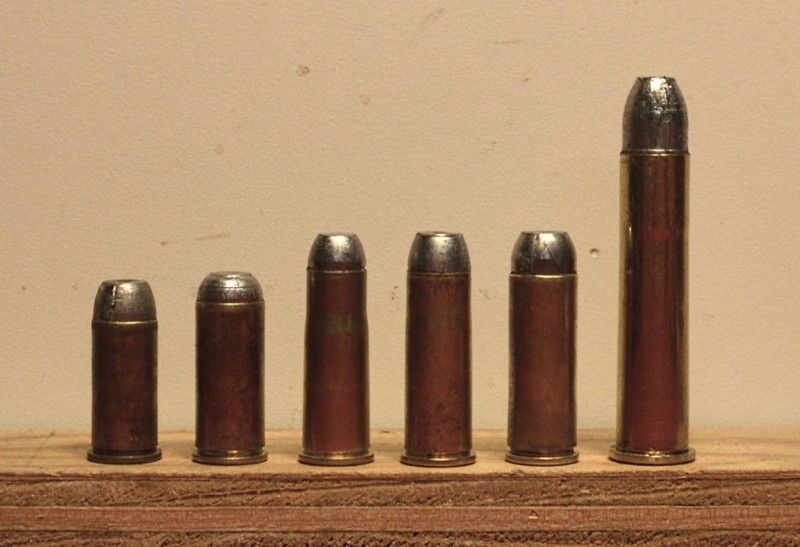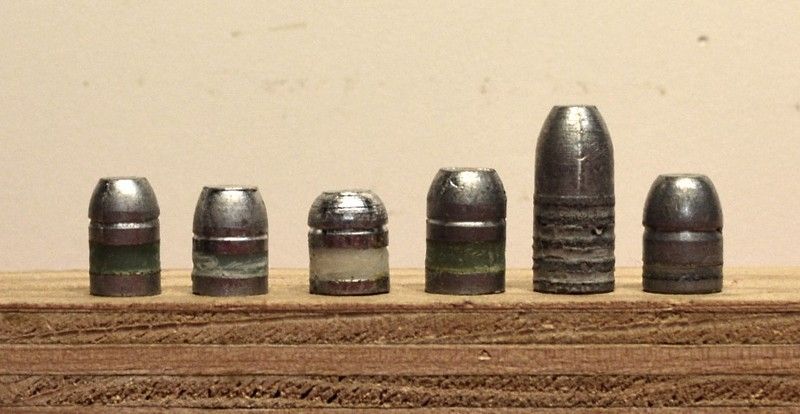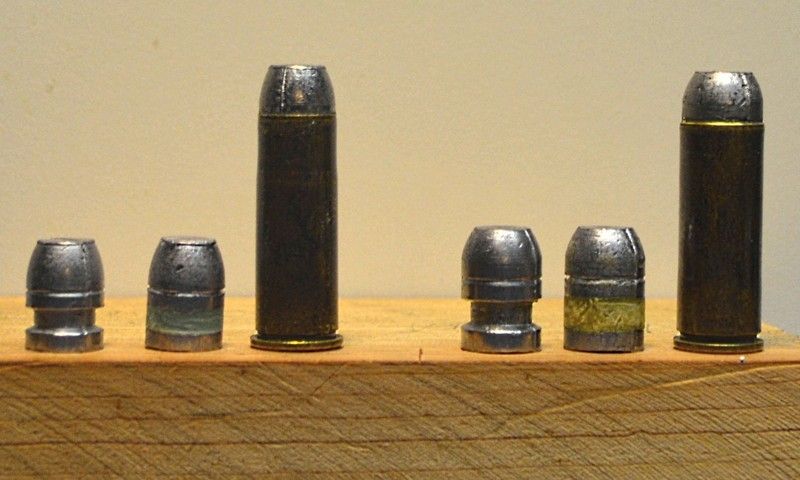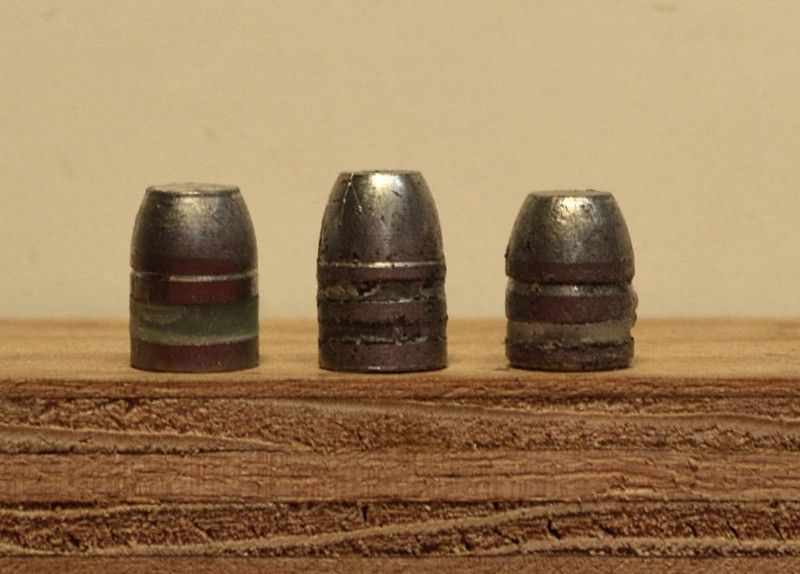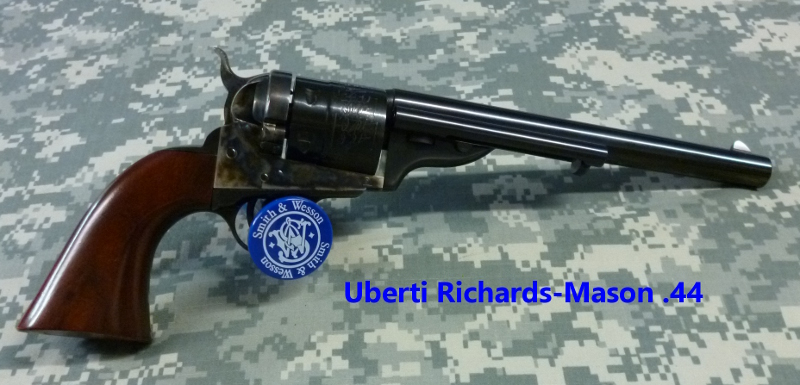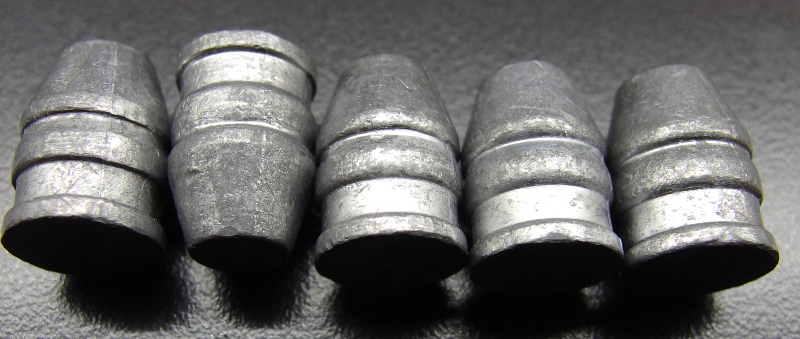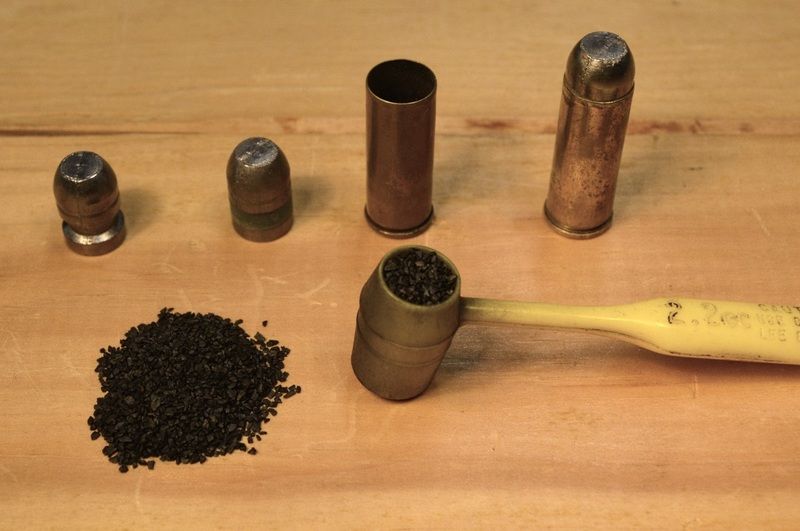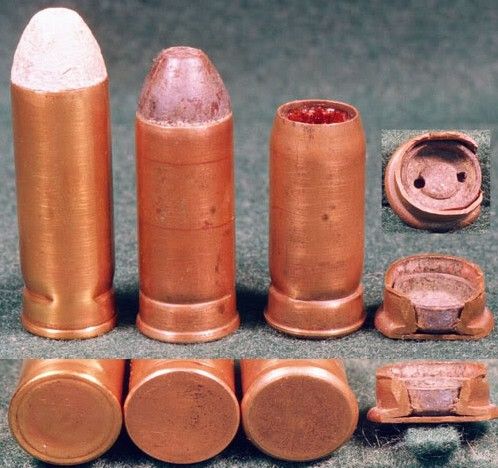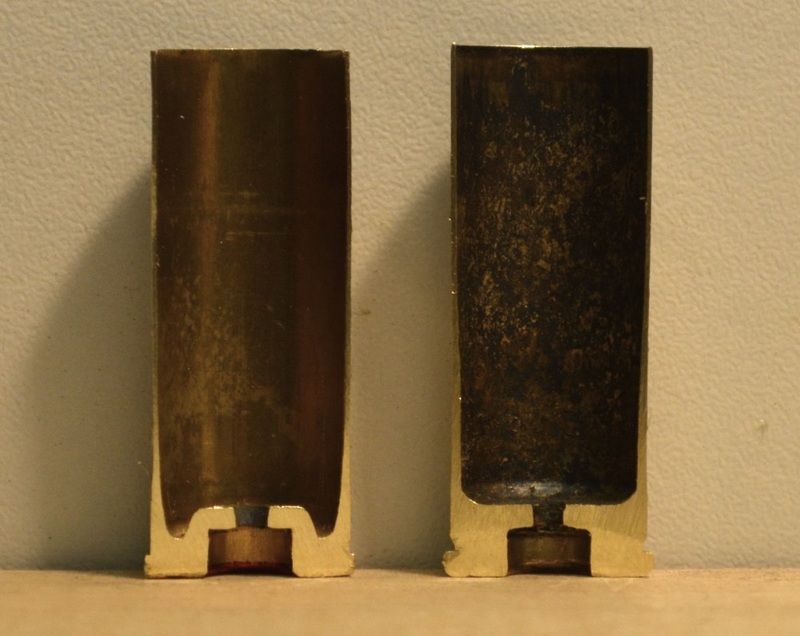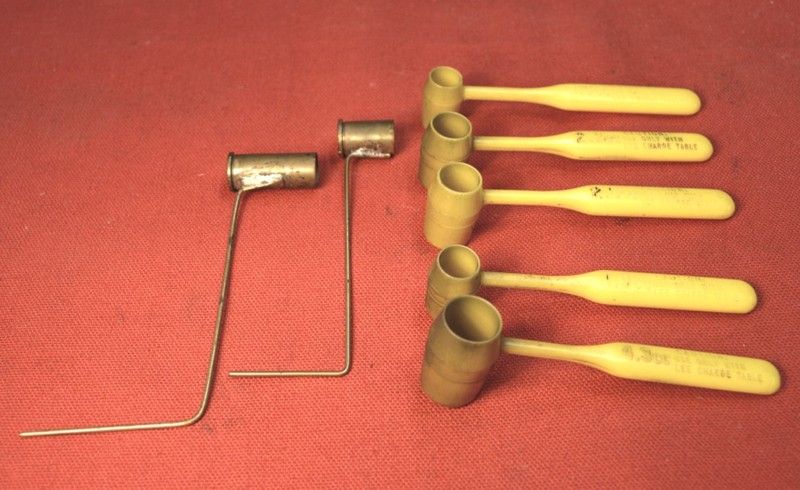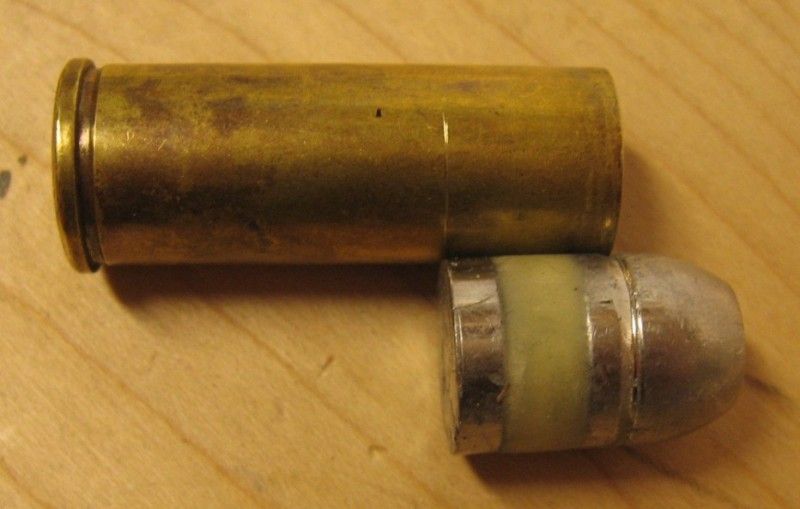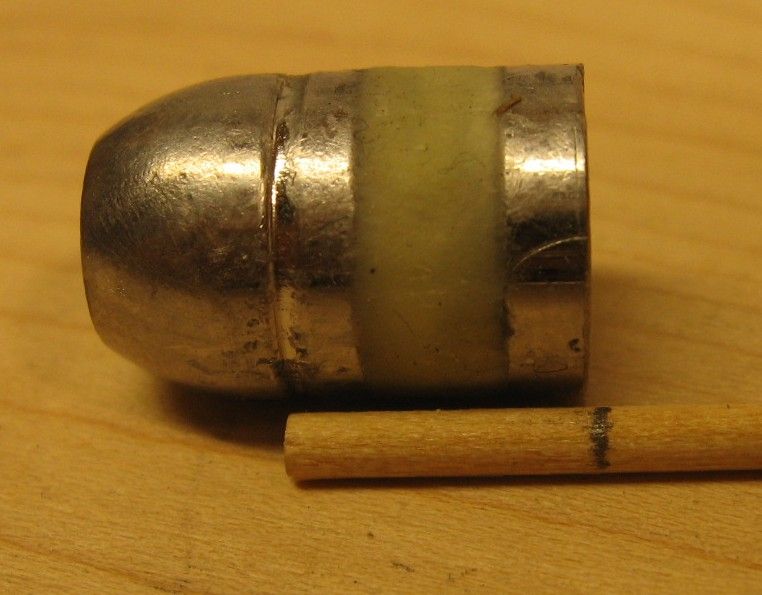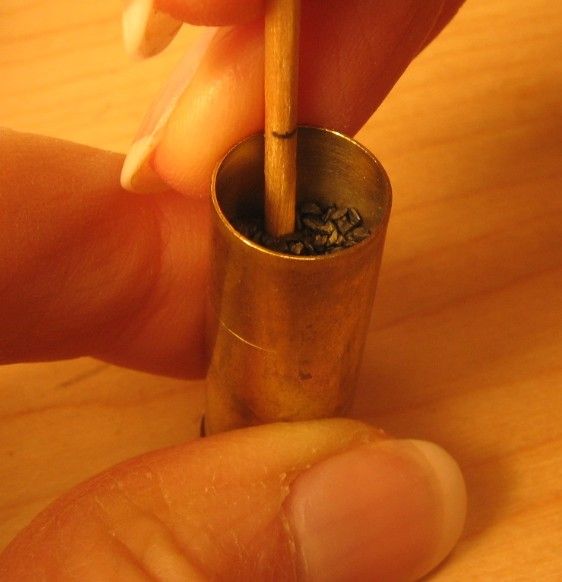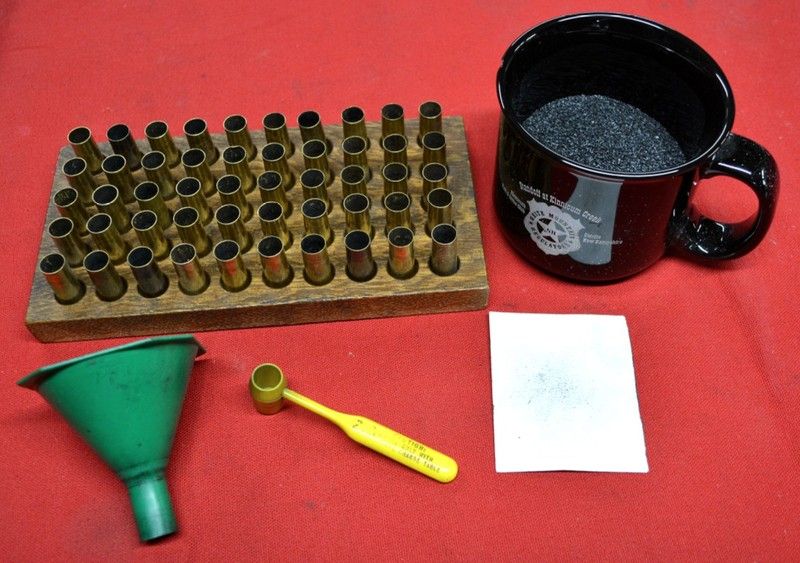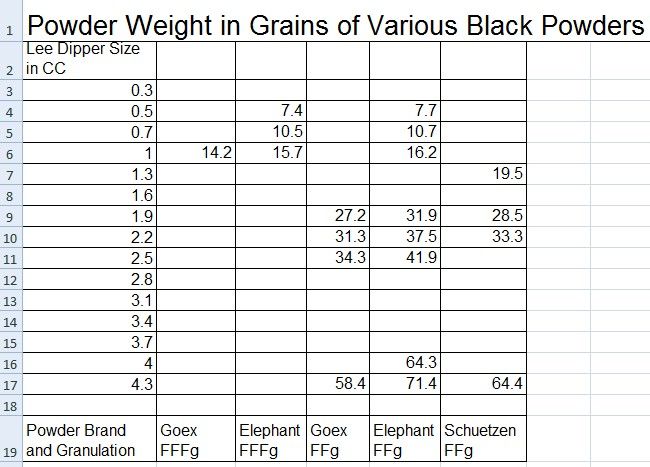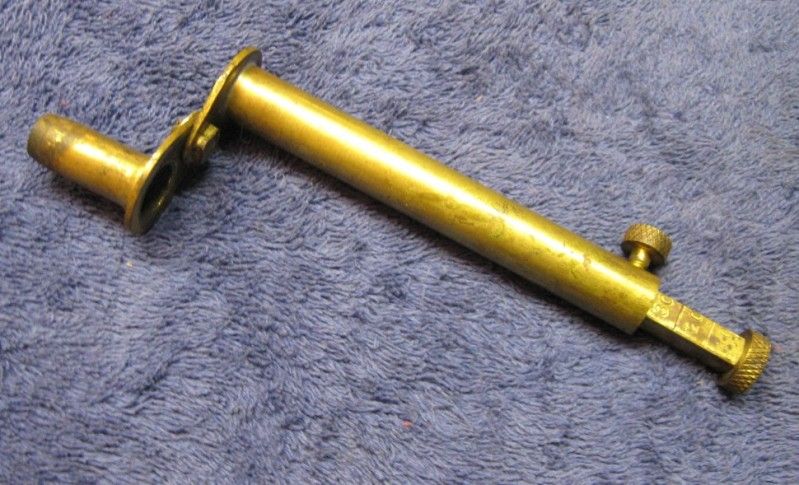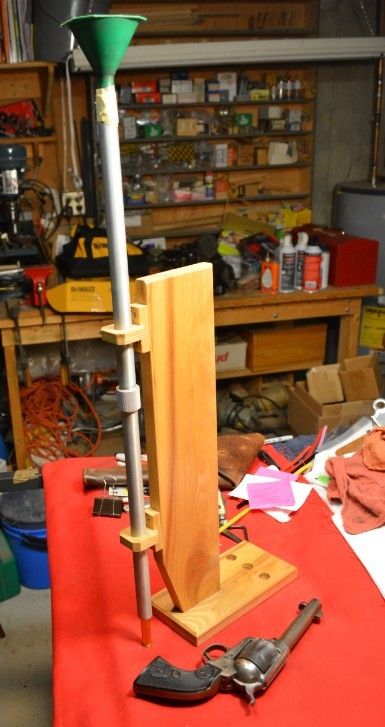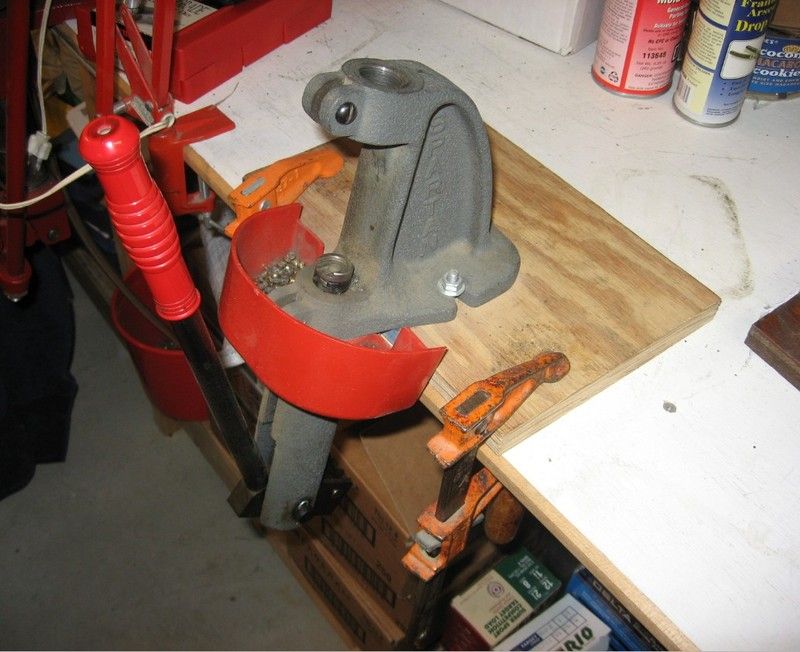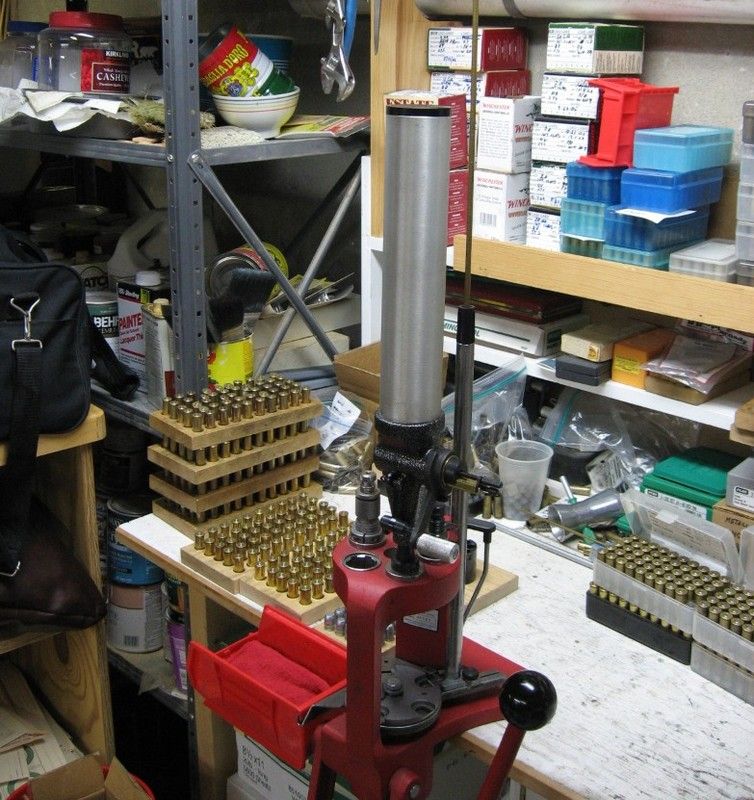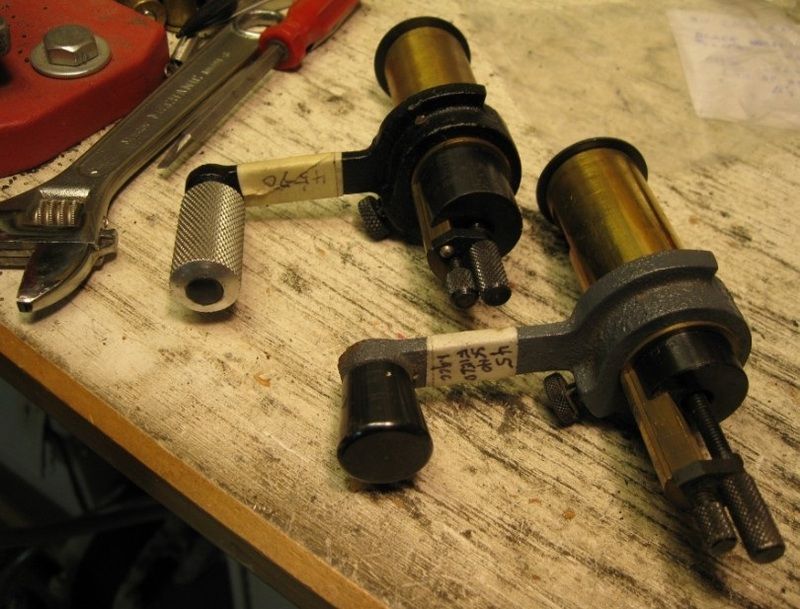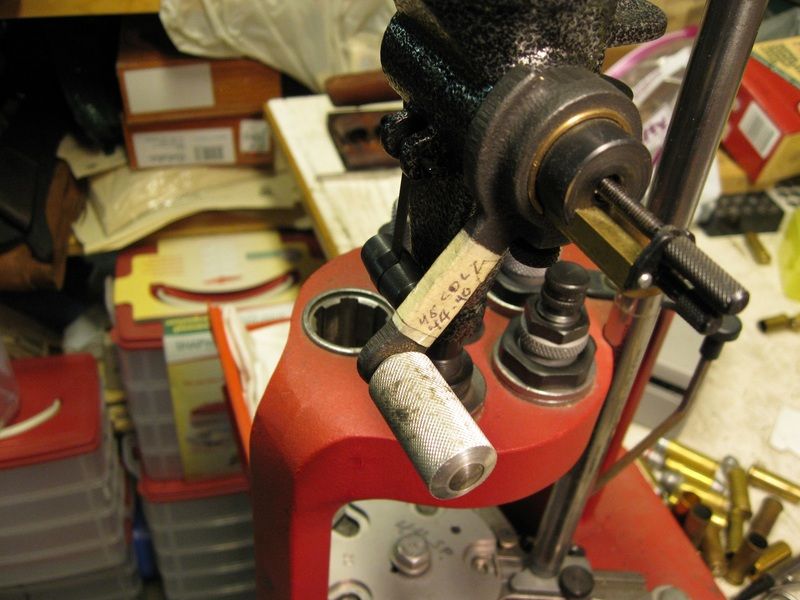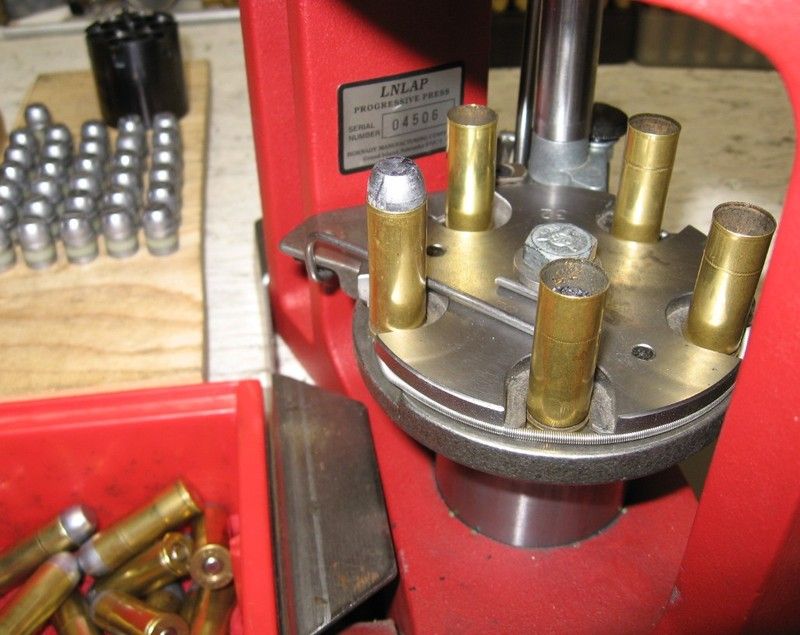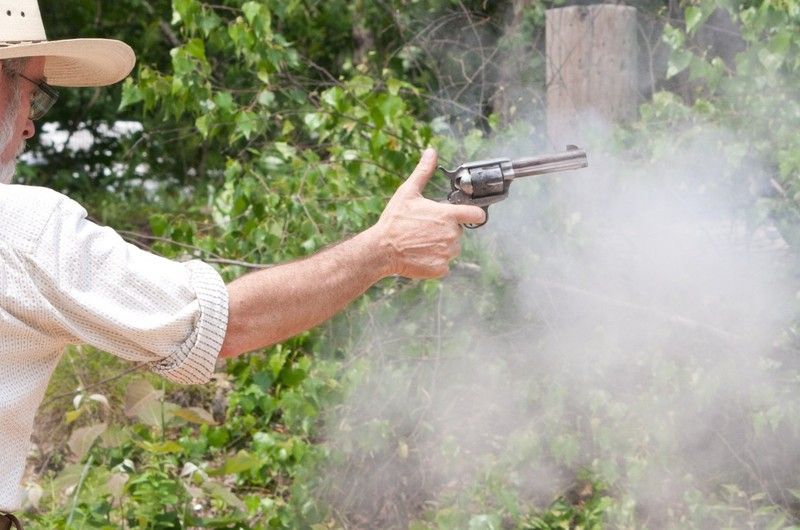Driftwood Johnson
Member
Howdy
I have noticed for some time now that most of the content in this section of The High Road relates to muzzle loaders. Nothing wrong with that, far from it. My first experience with Black Powder was with a Cap & Ball revolver in 1968. But there is not much content here regarding shooting Black Powder in cartridge guns.
So I thought it might be useful to post an essay on the methods I use when shooting Black Powder in cartridge guns, what works for me and what has not worked for me. I intend to cover preparation of the guns for Black Powder, making cartridges, and clean up. I will be mostly covering the guns used in Cowboy Action Shooting, so most of my comments will be about Black Powder cartridges used in revolvers and 'pistol caliber' rifles, such as 45 Colt, 45 Schofield, 44-40, 44 Russian, and 38-40. Other shooters of my acquaintance load 38 Special with Black Powder, but I have no personal experience loading Black Powder into that cartridge. I will also be discussing Black Powder shotgun shells. I will only make a few comments about the traditional 'rifle calibers' such as 45-70, since I have less experience with those.
Oh yeah, I will only be talking about real Black Powder, not the black powder substitutes. Nothing wrong with the subs, they make shooting with lots of smoke possible for many shooters who do not have access to real Black Powder. I will only say that those who prefer the subs because they believe they are easier to clean and less corrosive than real Black Powder are mistaken. More about that when I get to making cartridges and clean up.
As with the photo essay I did a few years ago comparing older S&W revolvers to the newer MIM models, I ask that posters respect that I started this thread to post the methods I have found useful. Of course, I do not 'own' this thread, this is a public forum after all. I welcome questions, comments, suggestions, and even differences of opinion. This thread is after all mostly about my own experiences and opinions.
I only ask that others refrain from posting their own photos in this thread.
Thanks
My interest in Black Powder cartridges started with my interest in Cowboy Action Shooting, roughly ten years ago. Contrary to what some may think, not very many CAS shooters use Black Powder, most shoot Smokeless. However there are probably around 10% or so who like to shoot the old guns with Black Powder, the way they would have been shot in the second half of the 19th Century. I spent my first couple of years in CAS shooting Smokeless, but eventually the lure of Black Powder brought me to The Dark Side, as we say.
There are many books published about shooting Black Powder. The books I found most useful where the ones written by Mike Venturino, specifically his books, Shooting Sixguns of the Old West, Shooting Colt Single Actions, Shooting Lever Guns of the Old West, and Shooting Buffalo Rifles of the Old West. I'm not sure which of these books are still in print, but a quick search of Amazon should make that obvious. In the first three books Mike has chapters about loading the common cartridges for each or these firearms, both Smokeless and Black Powder. I of course found the Black Powder information the most useful. I only disagree with Mike on one small point that I will cover later. The fourth book, the Buffalo Guns book goes into more detail with the big single shot cartridges such as 45-70 and many others. In this book Mike does not bother with Smokeless powder, he gets right to the heart of the matter and only discussing shooting the Sharps, Rolling Block, Trapdoor, 1885 Winchester and a few others with Black Powder. He has one chapter that covers general Black Powder loading of the old rifle cartridges and specific chapters of cartridges such as 45-70, 45-90, 45-110, 40-70, and a bunch of others. Mike gets pretty detailed with his discussions of loading these cartridges for maximum accuracy for BPCR competitions.
So, enough rambling, let's get down to brass tacks.
First, a few words about preparing a firearm for shooting Black Powder. There have been endless discussions in the past about 'seasoning' the bore. Also endless arguments regarding mixing petroleum based cleaners and Black Powder. I am only going to discuss what has worked best for me.
I want to remove any petroleum based oils or solvents that were in the gun, and I replace them with an oil that is compatible with Black Powder. If you mix Black Powder fouling with modern oils, you will probably build up a sludge that will be difficult to remove. So step number one is to get all the old fouling, that may be over 100 years old out, and replace whatever oils were used over the years with a lubricant that is compatible with Black Powder. Basically, I take the gun apart as far as I am comfortable, and clean all the parts thoroughly of old powder residue. Then I use a solvent to completely remove any old oils that were on the parts or inside the mechanism. Then I re-lubricate the parts with a Black Powder compatible oil, and finally I put the gun back together again. It may sound tedious, but this procedure only has to be done once, before shooing any BP in the gun.
Notice I said I take the gun apart as far as I am comfortable. It depends on the gun, how far I want to take it apart. The rule of thumb is, the further you take it apart, the easier it is to clean all the parts.
One more thing. I am not going to explain how to take down any or these guns. That would be way beyond the scope of this thread. There are plenty of disassembly books and videos available in print and on the web. I will make one specific plug. The very best book I have found is Antique Firearms Assembly/Disassembly by the late David R. Chicoine. He covers most of the guns I shoot in CAS and many more. This book is available on Amazon.
I am very comfortable taking a Colt (or colt replica) completely apart. Here is a 2nd Gen Colt, completely disassembled. The lockwork of the Colt is hidden up inside the frame, so to prepare the parts thoroughly it is best to take a Colt apart this far to prepare it for shooting Black Powder cartridges.

Take down of the old Three Screw Ruger Blackhawks is very similar to a Colt. Complete disassembly will make cleaning the parts a snap.

Modern New Model Rugers have more parts, and are a bit of a pain to put back together again, but I still recommend complete disassembly to prepare them for shooting Black Powder cartridges. This is a New Vaquero.

Now here is where the 'comfort level' of disassembly kicks in. The old S&W Top Breaks are a bit fussier to take apart. I have removed the cylinder, side plate, hammer spring, and hammer/hand assembly from this New Model Number Three. That is as far as I am comfortable going with the big S&W Top Breaks. I have avoided driving out the pins that hold the trigger and trigger spring in place. Taking an old Smith like this apart this far, I can still get all the old goo out and coat the parts with a coating of BP compatible oil.

This Winchester Model 1873 had probably a century's worth of powder fouling and old oil inside it. It needed to be completely taken apart to clean out all the old fouling and hardened oil.

Much better!

Let's not forget the shotguns. This nice old Stevens side lock hammer double was actually very easy to prepare for Black Powder shotshells. One screw removes the side locks. That is as far as I went. Everything could be scrubbed clean with this level of disassembly.

OK, so you have the gun all broken down. What do you do next? I take a nice strong solvent, some bronze bristle brushes (not stainless), old tooth brushes, Q-Tips, paper towels, and rags and go to town. I used to use a really strong solvent like Lacquer Thinner. This will totally remove every teeny bit of old oil, bringing the metal parts down to bare metal. That is what I want, bare metal. I will oil everything up again in the next step. Lacquer Thinner is a very strong solvent. Be sure you wear gloves and be sure you work in a well ventilated area. This stuff is bad for your liver. Be aware too, the fumes from Lacquer Thinner are heavier than air, and they will sink to the floor. Remember this if you are working in a basement with pilot lights burning in the furnace or water heater. Avoid house fires and explosions. More recently I have been using regular drugstore rubbing alcohol. Not quite as aggressive as Lacquer Thinner and it may require a bit more scrubbing. But less likely to poison you. I dunno about how bad the fumes are near pilot lights, so be aware of that.
So basically, I take all the loose parts, immerse them in solvent, scrub them, then set them aside to dry. Then I go after the frame and any other parts that are still attached to the frame. With guns that I have not completely disassembled, such as the Top Breaks, I take lots of Q-Tips and lots of alcohol and swab the dickens out of everything in sight, being sure to drip some in the hidden nooks and crannies. The goal here is to dissolve as much oils and fouling as possible, so it may require lots of Q-Tips. Then more Q-Tips to sop up whatever residue there is. Be sure to keep the solvent away from wood grips or old hard rubber grips (or modern plastic grips), as it will eat away at the finish.
My favorite Black Powder compatible oil is Ballistol. That is what I use to put a coating on the parts to prevent corrosion and to keep them lubricated. You don't need much, a light coating will do. I keep a little jar of Ballistol on my workbench and a few Q-Tips full will do the job. There is a saying in the gun world that too much lubrication will attract dirt and is worse than not enough oil. I actually fly in the face of that when I am lubricating everything before reassembly. Everything gets a nice light coating of Ballistol. Everything.

Ballistol may be a little difficult to find. A bunch of years ago I called them up and they told me where a local dealer was.You can go to their website and they have a dealer locating page. You can also order direct.
https://ballistol.com/
One other thing. This is important. Black Powder fouling is supposed to be very corrosive, right? Well, Black Powder fouling is nowhere near as corrosive as many shooters believe. In the old days when corrosive primers were being used, the combination of BP fouling and corrosive primers caused lots of rust. We do not use corrosive primers any more, so BP fouling alone is not as corrosive as many believe. The main reason BP fouling is corrosive is because it is extremely dry and will suck water vapor out of the air. Wet BP fouling in contact with steel and iron will indeed cause corrosion. But if you can prevent the fouling from absorbing water from the air, there will be no corrosion. I found this out through trial and error. If Black Powder fouling is saturated with oil, it cannot absorb any water out of the air. Think of it like a sponge that is already saturated with water. If the sponge is already saturated, it cannot absorb any more water. It is the same with Black Powder fouling. Infuse it with oil, and it cannot absorb any water from the air. Oily Black Powder fouling will not cause rust.
And that, friends, is why we are going to coat everything with Ballistol before we put the gun back together again. I will get into this more when I talk about cleaning, but bear it in mind. This treatment, plus the tricks I learned about cleaning, mean we do not have to completely disassemble the gun to clean it every time we shoot it with Black Powder.
More about that later. For now, put the gun back together again and make sure everything works correctly. Soak a patch with Ballistol and run it down the bore as well as the chambers of a revolver. Then follow up with a dry patch to mop up the excess. The chambers and bore are now lightly oiled, and ready to receive their first Black Powder cartridges.
Next Installment - A short discussion of Black Powder
I have noticed for some time now that most of the content in this section of The High Road relates to muzzle loaders. Nothing wrong with that, far from it. My first experience with Black Powder was with a Cap & Ball revolver in 1968. But there is not much content here regarding shooting Black Powder in cartridge guns.
So I thought it might be useful to post an essay on the methods I use when shooting Black Powder in cartridge guns, what works for me and what has not worked for me. I intend to cover preparation of the guns for Black Powder, making cartridges, and clean up. I will be mostly covering the guns used in Cowboy Action Shooting, so most of my comments will be about Black Powder cartridges used in revolvers and 'pistol caliber' rifles, such as 45 Colt, 45 Schofield, 44-40, 44 Russian, and 38-40. Other shooters of my acquaintance load 38 Special with Black Powder, but I have no personal experience loading Black Powder into that cartridge. I will also be discussing Black Powder shotgun shells. I will only make a few comments about the traditional 'rifle calibers' such as 45-70, since I have less experience with those.
Oh yeah, I will only be talking about real Black Powder, not the black powder substitutes. Nothing wrong with the subs, they make shooting with lots of smoke possible for many shooters who do not have access to real Black Powder. I will only say that those who prefer the subs because they believe they are easier to clean and less corrosive than real Black Powder are mistaken. More about that when I get to making cartridges and clean up.
As with the photo essay I did a few years ago comparing older S&W revolvers to the newer MIM models, I ask that posters respect that I started this thread to post the methods I have found useful. Of course, I do not 'own' this thread, this is a public forum after all. I welcome questions, comments, suggestions, and even differences of opinion. This thread is after all mostly about my own experiences and opinions.
I only ask that others refrain from posting their own photos in this thread.
Thanks
My interest in Black Powder cartridges started with my interest in Cowboy Action Shooting, roughly ten years ago. Contrary to what some may think, not very many CAS shooters use Black Powder, most shoot Smokeless. However there are probably around 10% or so who like to shoot the old guns with Black Powder, the way they would have been shot in the second half of the 19th Century. I spent my first couple of years in CAS shooting Smokeless, but eventually the lure of Black Powder brought me to The Dark Side, as we say.
There are many books published about shooting Black Powder. The books I found most useful where the ones written by Mike Venturino, specifically his books, Shooting Sixguns of the Old West, Shooting Colt Single Actions, Shooting Lever Guns of the Old West, and Shooting Buffalo Rifles of the Old West. I'm not sure which of these books are still in print, but a quick search of Amazon should make that obvious. In the first three books Mike has chapters about loading the common cartridges for each or these firearms, both Smokeless and Black Powder. I of course found the Black Powder information the most useful. I only disagree with Mike on one small point that I will cover later. The fourth book, the Buffalo Guns book goes into more detail with the big single shot cartridges such as 45-70 and many others. In this book Mike does not bother with Smokeless powder, he gets right to the heart of the matter and only discussing shooting the Sharps, Rolling Block, Trapdoor, 1885 Winchester and a few others with Black Powder. He has one chapter that covers general Black Powder loading of the old rifle cartridges and specific chapters of cartridges such as 45-70, 45-90, 45-110, 40-70, and a bunch of others. Mike gets pretty detailed with his discussions of loading these cartridges for maximum accuracy for BPCR competitions.
So, enough rambling, let's get down to brass tacks.
First, a few words about preparing a firearm for shooting Black Powder. There have been endless discussions in the past about 'seasoning' the bore. Also endless arguments regarding mixing petroleum based cleaners and Black Powder. I am only going to discuss what has worked best for me.
I want to remove any petroleum based oils or solvents that were in the gun, and I replace them with an oil that is compatible with Black Powder. If you mix Black Powder fouling with modern oils, you will probably build up a sludge that will be difficult to remove. So step number one is to get all the old fouling, that may be over 100 years old out, and replace whatever oils were used over the years with a lubricant that is compatible with Black Powder. Basically, I take the gun apart as far as I am comfortable, and clean all the parts thoroughly of old powder residue. Then I use a solvent to completely remove any old oils that were on the parts or inside the mechanism. Then I re-lubricate the parts with a Black Powder compatible oil, and finally I put the gun back together again. It may sound tedious, but this procedure only has to be done once, before shooing any BP in the gun.
Notice I said I take the gun apart as far as I am comfortable. It depends on the gun, how far I want to take it apart. The rule of thumb is, the further you take it apart, the easier it is to clean all the parts.
One more thing. I am not going to explain how to take down any or these guns. That would be way beyond the scope of this thread. There are plenty of disassembly books and videos available in print and on the web. I will make one specific plug. The very best book I have found is Antique Firearms Assembly/Disassembly by the late David R. Chicoine. He covers most of the guns I shoot in CAS and many more. This book is available on Amazon.
I am very comfortable taking a Colt (or colt replica) completely apart. Here is a 2nd Gen Colt, completely disassembled. The lockwork of the Colt is hidden up inside the frame, so to prepare the parts thoroughly it is best to take a Colt apart this far to prepare it for shooting Black Powder cartridges.

Take down of the old Three Screw Ruger Blackhawks is very similar to a Colt. Complete disassembly will make cleaning the parts a snap.

Modern New Model Rugers have more parts, and are a bit of a pain to put back together again, but I still recommend complete disassembly to prepare them for shooting Black Powder cartridges. This is a New Vaquero.

Now here is where the 'comfort level' of disassembly kicks in. The old S&W Top Breaks are a bit fussier to take apart. I have removed the cylinder, side plate, hammer spring, and hammer/hand assembly from this New Model Number Three. That is as far as I am comfortable going with the big S&W Top Breaks. I have avoided driving out the pins that hold the trigger and trigger spring in place. Taking an old Smith like this apart this far, I can still get all the old goo out and coat the parts with a coating of BP compatible oil.

This Winchester Model 1873 had probably a century's worth of powder fouling and old oil inside it. It needed to be completely taken apart to clean out all the old fouling and hardened oil.

Much better!

Let's not forget the shotguns. This nice old Stevens side lock hammer double was actually very easy to prepare for Black Powder shotshells. One screw removes the side locks. That is as far as I went. Everything could be scrubbed clean with this level of disassembly.

OK, so you have the gun all broken down. What do you do next? I take a nice strong solvent, some bronze bristle brushes (not stainless), old tooth brushes, Q-Tips, paper towels, and rags and go to town. I used to use a really strong solvent like Lacquer Thinner. This will totally remove every teeny bit of old oil, bringing the metal parts down to bare metal. That is what I want, bare metal. I will oil everything up again in the next step. Lacquer Thinner is a very strong solvent. Be sure you wear gloves and be sure you work in a well ventilated area. This stuff is bad for your liver. Be aware too, the fumes from Lacquer Thinner are heavier than air, and they will sink to the floor. Remember this if you are working in a basement with pilot lights burning in the furnace or water heater. Avoid house fires and explosions. More recently I have been using regular drugstore rubbing alcohol. Not quite as aggressive as Lacquer Thinner and it may require a bit more scrubbing. But less likely to poison you. I dunno about how bad the fumes are near pilot lights, so be aware of that.
So basically, I take all the loose parts, immerse them in solvent, scrub them, then set them aside to dry. Then I go after the frame and any other parts that are still attached to the frame. With guns that I have not completely disassembled, such as the Top Breaks, I take lots of Q-Tips and lots of alcohol and swab the dickens out of everything in sight, being sure to drip some in the hidden nooks and crannies. The goal here is to dissolve as much oils and fouling as possible, so it may require lots of Q-Tips. Then more Q-Tips to sop up whatever residue there is. Be sure to keep the solvent away from wood grips or old hard rubber grips (or modern plastic grips), as it will eat away at the finish.
My favorite Black Powder compatible oil is Ballistol. That is what I use to put a coating on the parts to prevent corrosion and to keep them lubricated. You don't need much, a light coating will do. I keep a little jar of Ballistol on my workbench and a few Q-Tips full will do the job. There is a saying in the gun world that too much lubrication will attract dirt and is worse than not enough oil. I actually fly in the face of that when I am lubricating everything before reassembly. Everything gets a nice light coating of Ballistol. Everything.

Ballistol may be a little difficult to find. A bunch of years ago I called them up and they told me where a local dealer was.You can go to their website and they have a dealer locating page. You can also order direct.
https://ballistol.com/
One other thing. This is important. Black Powder fouling is supposed to be very corrosive, right? Well, Black Powder fouling is nowhere near as corrosive as many shooters believe. In the old days when corrosive primers were being used, the combination of BP fouling and corrosive primers caused lots of rust. We do not use corrosive primers any more, so BP fouling alone is not as corrosive as many believe. The main reason BP fouling is corrosive is because it is extremely dry and will suck water vapor out of the air. Wet BP fouling in contact with steel and iron will indeed cause corrosion. But if you can prevent the fouling from absorbing water from the air, there will be no corrosion. I found this out through trial and error. If Black Powder fouling is saturated with oil, it cannot absorb any water out of the air. Think of it like a sponge that is already saturated with water. If the sponge is already saturated, it cannot absorb any more water. It is the same with Black Powder fouling. Infuse it with oil, and it cannot absorb any water from the air. Oily Black Powder fouling will not cause rust.
And that, friends, is why we are going to coat everything with Ballistol before we put the gun back together again. I will get into this more when I talk about cleaning, but bear it in mind. This treatment, plus the tricks I learned about cleaning, mean we do not have to completely disassemble the gun to clean it every time we shoot it with Black Powder.
More about that later. For now, put the gun back together again and make sure everything works correctly. Soak a patch with Ballistol and run it down the bore as well as the chambers of a revolver. Then follow up with a dry patch to mop up the excess. The chambers and bore are now lightly oiled, and ready to receive their first Black Powder cartridges.
Next Installment - A short discussion of Black Powder
Last edited:






